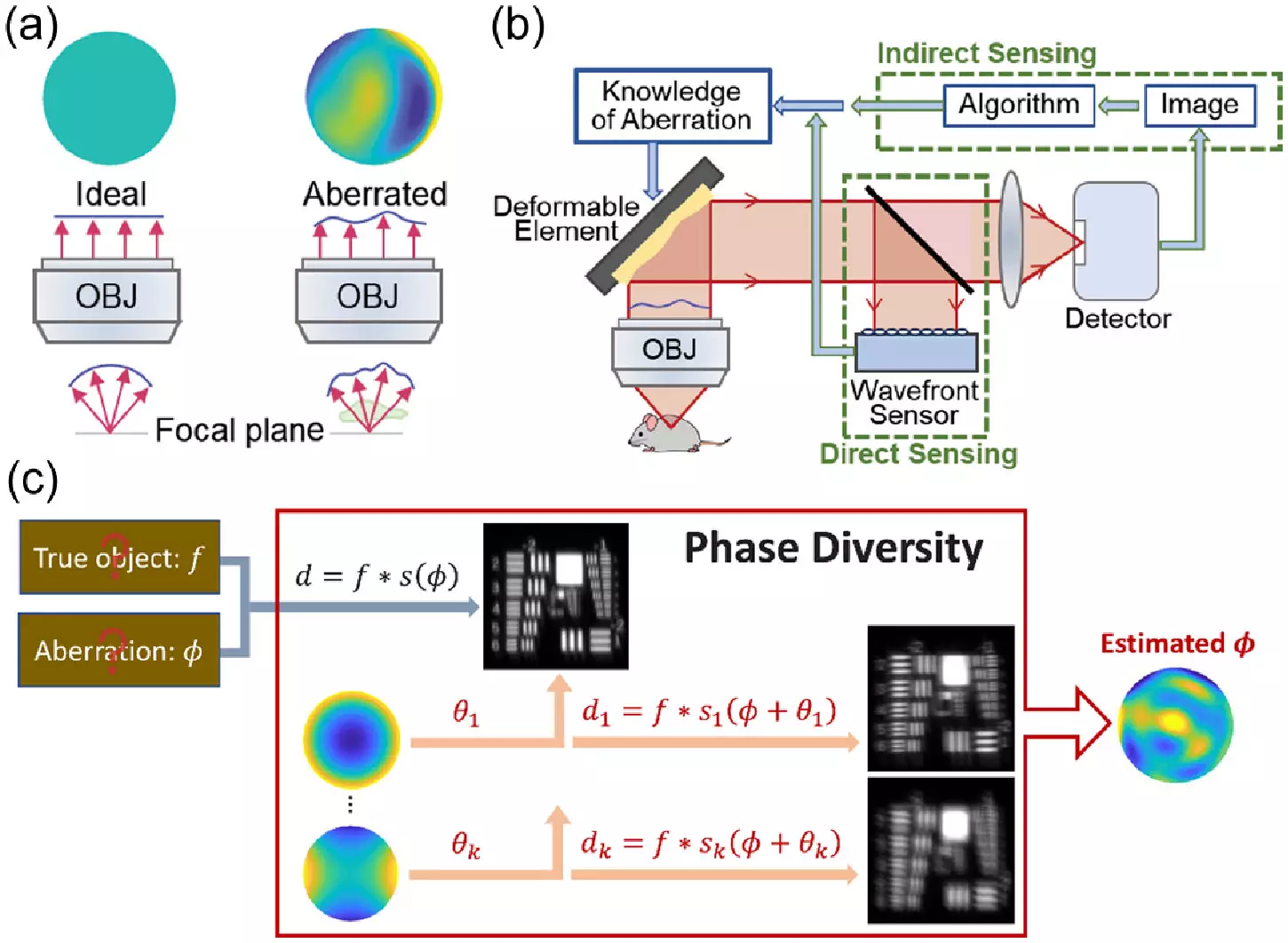From far-away galaxies to the intricate world of biological samples, the evolution of imaging techniques has taken a significant leap forward. A team of researchers at HHMI’s Janelia Research Campus has successfully adapted astronomy techniques to unblur images in the field of life sciences. The innovative approach provides biologists with a faster and more cost-effective way to obtain clearer and sharper microscopy images, opening new possibilities for research and discovery.
In the realm of astronomy, the use of techniques that measure atmospheric distortions has revolutionized the clarity and sharpness of images of distant galaxies. Drawing inspiration from these methods, microscopists have been exploring adaptive optics to enhance the visualization of thick biological samples. However, traditional adaptive optics techniques have been plagued by complexities, high costs, and slow processes, limiting their accessibility to many research labs. In a bid to democratize adaptive optics in the life sciences, the team at HHMI’s Janelia Research Campus has turned to phase diversity techniques, a proven tool in astronomy that introduces known aberrations to unblur images.
The adaptation of phase diversity methods for microscopy represents a significant advancement in the field. By incorporating additional images with known aberrations into a blurry image with unknown distortions, researchers can effectively unblur the original image without the need for extensive modifications to existing imaging systems. Leveraging this innovative approach, the team developed a microscope equipped with a deformable mirror and two additional lenses, enabling rapid calibration and correction of randomly generated aberrations. Through meticulous validation and testing, the team demonstrated the capability of the new method to provide clearer images of fluorescent beads and fixed cells, paving the way for future applications in real-world samples such as living cells and tissues.
The driving force behind this groundbreaking research is the vision to make adaptive optics more widely available and user-friendly for biologists. With a focus on automation and ease of use, the team aims to streamline the implementation process and extend the utility of the method to a broader range of microscopes. By enhancing the speed and cost-effectiveness of adaptive optics techniques, researchers hope to empower labs with the ability to gain deeper insights into cellular structures and functions, ultimately advancing the frontiers of biological imaging.
As the research progresses, the team continues to refine and optimize the new method for broader applications. The ultimate goal is to make adaptive optics accessible to a wider community of researchers, enabling unprecedented clarity and precision in microscopy. By bridging the gap between astronomy and the life sciences, this innovative approach holds the promise of unlocking new possibilities and discoveries in the microscopic world, revolutionizing the way we perceive and study the intricacies of biological systems.


Leave a Reply
You must be logged in to post a comment.